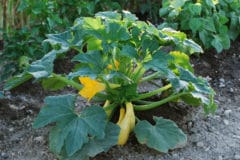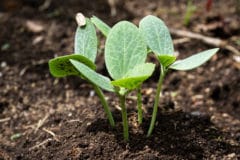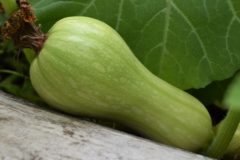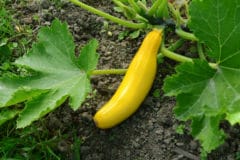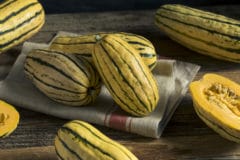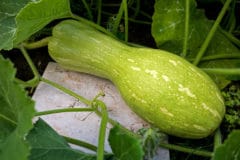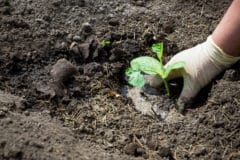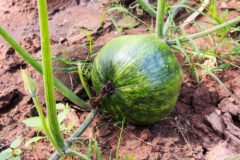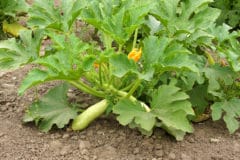Choose Location to Plant
Crookneck squash must receive at least six hours of sunlight per day. Planting in a large container can be done for those gardeners that do not have an area that guarantees adequate sunlight. The container can be moved where the sunlight is present.
Prepare the Soil
Crookneck squash plants grow 3-4 feet wide and up to 3 feet tall. A plant this size can quickly use up the available nutrients in the surrounding soil. Prepare the soil with about 3 inches of compost mixed to a depth of about 12 inches. Also, add a natural fertilizer like fish emulsion to give the plants a healthy start.
When to Plant
Crookneck squash plants are heat-loving plants that thrive in temperatures from 65°F (18°C) to 85°F (29°C). When the air temperature consistently reaches 65°F (18°C) and the soil two inches below the surface is 60°F (16°C) or higher, it is time to plant crookneck squash outside.
How to Plant
The planting method differs slightly depending on where the crookneck squash is planted. When planting in garden rows, 1 inch deep about 36 inches apart. After the plants have true leaves, cut at the soil’s surface the weaker of the two seedlings that were planted next to one another. Rows should be spaced 4 feet apart.
Growing squash in hills (mounds) has been the traditional method for centuries. The hill should be 4-8 feet in diameter. Sow two seeds 1 inch deep and 36 inches apart. When the seedlings have true leaves, thin out to the healthiest plant every 36 inches.
Direct seed sowing usually produces the best crookneck squash plant, but transplanting seedlings you started or bought can also be productive. If transplanting seedlings, space them 36 inches apart.
Water Requirements
If you follow all the guidelines in growing crookneck then improperly water, your plants will soon die or stop producing squash. Here are some proper watering guidelines to follow:
- Water plants early in the day.
- Water plants deeply.
- Water at base of plant only.
- Keep soil moist but not soggy.
- Water more often in dry, hot weather.
Pests that Attack Crookneck Squash
The insects that are capable of causing the most damage to crookneck squash are the squash vine borer and squash bugs. Aphids and cucumber beetles can do harm also. All of these can be controlled by natural products or methods. The key is to be alert to the insects’ presence and learn how to combat their damaging effects before they attack.

